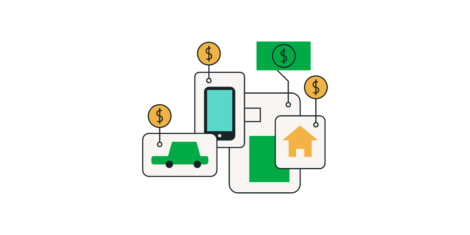In the e-commerce world, you often see terms like “retention” and “customer loyalty” thrown around in the same context. The danger with this, however, is that these two terms are not interchangeable. While it’s true that they are quite closely connected, each word focuses on a different perspective within the B2C relationship.
Defining the difference
Loyalty is defined by many as a commitment or faithfulness to a cause, country, group, or person. Retention, on the other hand, refers to the act of keeping someone in a position, job, etc. In an e-commerce context, we typically place the word “customer” in front of each term, clearly highlighting their differences:
While customer loyalty is dictated by the ways in which a customer reacts to and interacts with a particular brand, 4 Backend E-Commerce Tricks That Increase Retentioncustomer retention is dependent on the actions of the brand to secure that loyalty.
Another way of looking at it is in terms of growth. Customer loyalty is a tool used to encourage and develop growth, using marketing strategies to turn experiences into positive outcomes for customers in an effort to have them return to your business.
Once this loyalty is gained, then, customer retention is used to preserve it in an effort to reduce the decline in customer engagement and ensuring your brand fits the needs of the customer.
Combatting churn
From these definitions, it’s clear that loyalty and retention can (and should!) be used together to combat the negative effects of customer churn. Although this might sound challenging and time-consuming, the solution is already built into various aspects of your rewards program! Here are three components of your program can help you both grow and preserve customer loyalty.
1. Redeeming rewards
I think it’s pretty safe to assume that most customers are drawn to a loyalty program by the promise of being rewarded for their business. E-commerce promotions have a significant impact on purchasing decisions, even with repeat customers. I’m sure there’s the odd situation where a customer is just genuinely impressed by a business and wants to express their support, but more often than not customers approach loyalty with a “what’s in it for me?” mentality.
Develop Growth
If this is the case, offering a diverse rewards menu makes your program’s value easy to see and understand for new and prospective customers. By treating shoppers to a customizable experience you set your brand apart from competitors that have not diversified their program’s offerings, and new customers will be excited to participate.
Preserve Growth
Personalization and customization are two huge components of successful customer experiences, and customers have come to expect them from every retailer they shop with. Extending your program’s value beyond standard discounts demonstrates an understanding of your customer’s preferences and lifestyle, establishing a switching barrier that prevents them from considering your competitors.
2. Earning rewards
It may seem a bit backward to discuss earning rewards after redeeming them but as I mentioned before, redeeming rewards is often the initial draw to a loyalty program. Once a potential customer has decided they want the rewards you have to offer they need to be convinced that doing the work required to receive the reward is worth it, making how they earn rewards a huge consideration.
Develop Growth
Just like with the rewards themselves, having a variety of ways to earn rewards clearly communicates the benefits of your program to new customers. A well-developed explainer page can also assist in this process. Giving customers the opportunity to earn points for using social media, making purchases, or referring friends to your brand makes it easy for inquiring shoppers to see how the program fits into their lifestyle, making it an easier sell and a more enticing offer.
Preserve Growth
This easy lifestyle integration plays directly into the retention component of your loyalty strategy. After being sold on the convenience of your program, customers will continue to incorporate it into their buying habits and routines in order to see recurring benefits. You can also increase the likelihood of continued participation by effectively promoting your loyalty program, keeping it top of mind for new and returning customers alike.
3. Program structure
Just like any other aspect of your loyalty program, you should consider how it’s set up. Some loyalty apps (such as Sweet Tooth – no bias, of course) allow you to set up your rewards program using customer groups and/or tiers. This adds a sense of dynamism to your program that a one-size-fits-all structure can’t deliver.
Develop Growth
The immense popularity of Pokémon Go clearly demonstrates how much people enjoy gaming – especially when it can be easily incorporated into routine activities. Tiered programs bring gamification to the table, incentivizing your customers to strive to reach the next level. This type of motivation will inspire new customers to join in, especially if the hype around your program is already huge.
Sephora’s VIB program has this down to a fine art, as customers are constantly taking to social media to brag about how much they’ve spent to reach that customer level. This type of energy and community will excite your new customers and have them falling over themselves to enroll.
Preserve Growth
Tiers are a genius addition to your loyalty program because they significantly benefit your new and returning customers in equal measure. While new customers are inspired by the high levels of competition, your most loyal customers can be recognized for their continued business.
Offering special rewards for your best customers is a great way to demonstrate your appreciation of their business and to create a feeling of elitism or celebrity for your customers. This type of recognition makes the customer feel truly value, and ensures your position as a retailer who knows, understands, and cares about their customers.
Retention + Customer Loyalty = Simple Solution
Success in the e-commerce industry can often feel far away. With high levels of competition in industries like supplements and cosmetics, it’s easy to get bogged down with marketing and discounting solutions that don’t work. However, if you rely on the combined power of retention and customer loyalty, you too can experience the proven profitability of repeat customers and see continued growth for many years to come.




